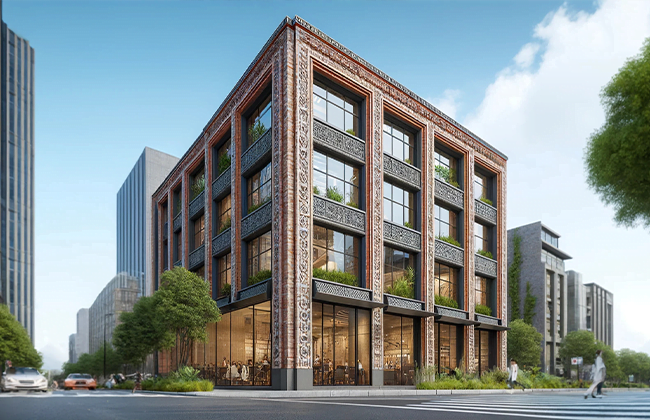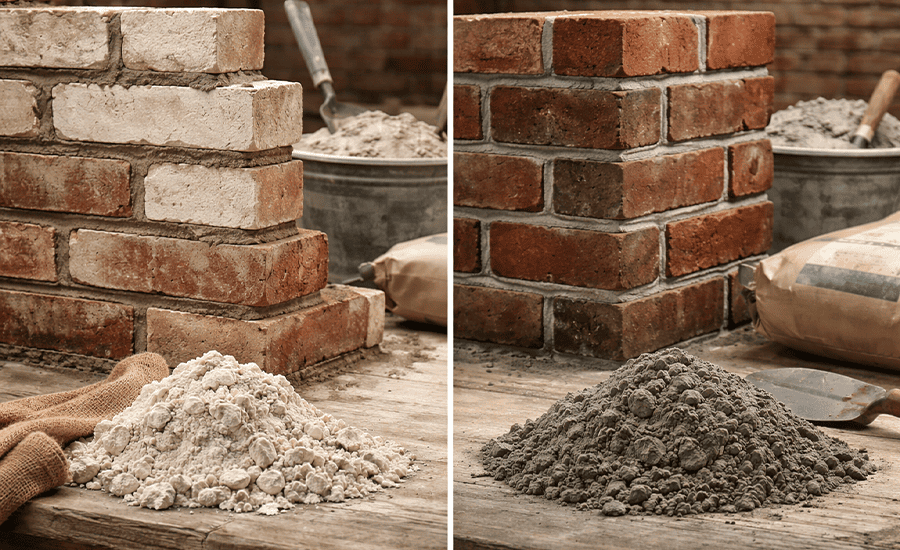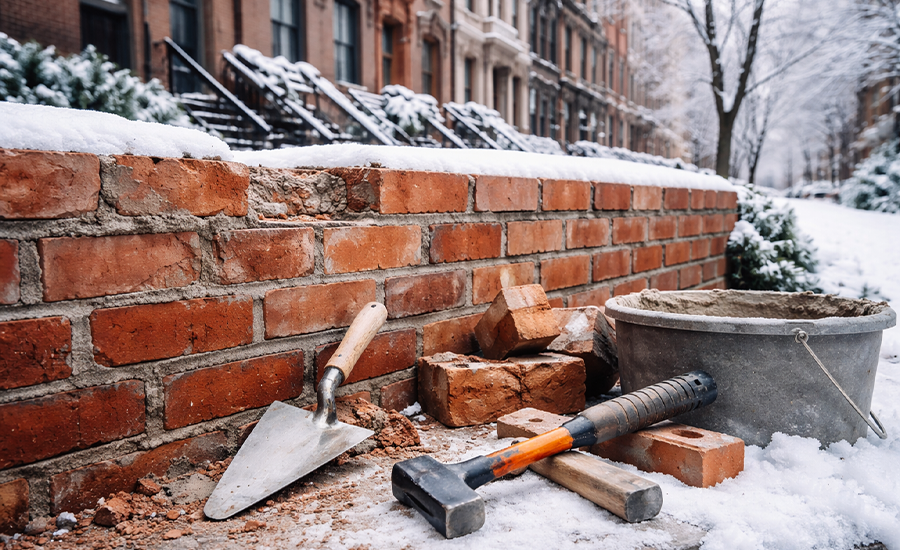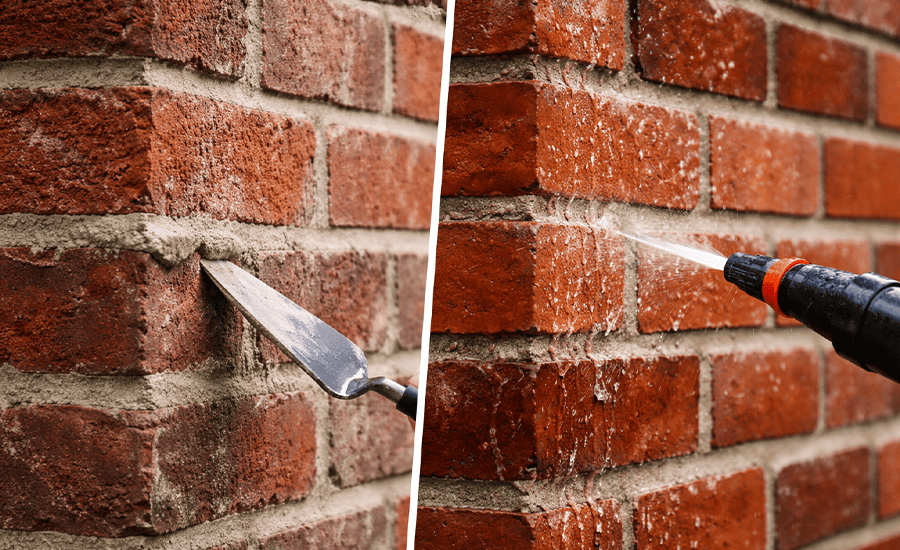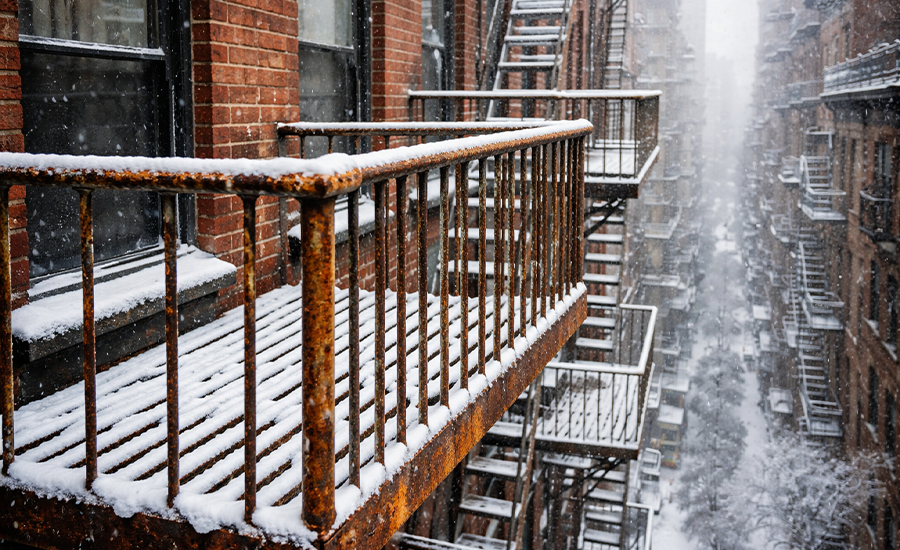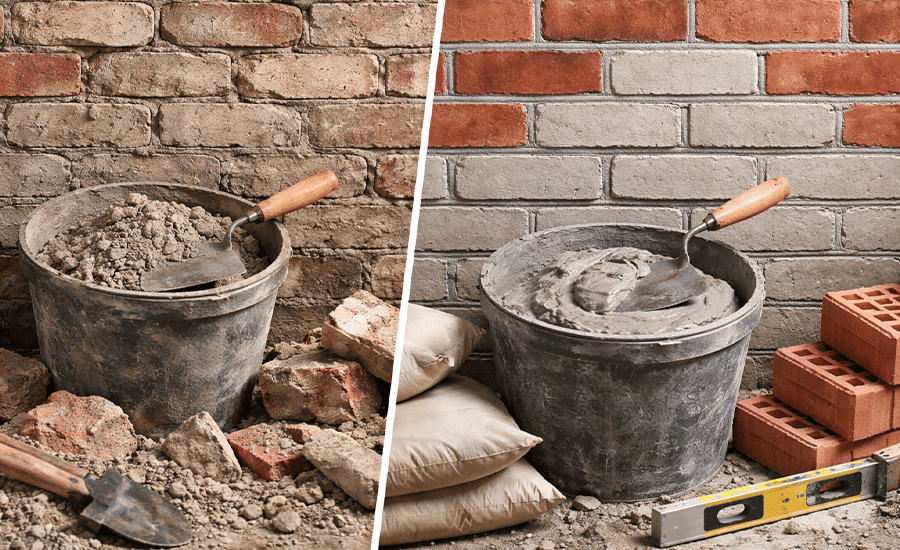Commercial brickwork is a fundamental component in the construction of commercial buildings, blending durability with aesthetic appeal. This guide dives into the various aspects of commercial brickwork, offering insights into its benefits, the challenges it faces, and the best practices for installation and maintenance. Whether you are involved in building new structures or maintaining existing ones, understanding commercial brickwork is crucial.
What is Commercial Brickwork?
Commercial brickwork refers to the brick constructions utilized in various commercial buildings, such as offices, schools, and retail complexes. This construction method relies on diverse techniques and materials that ensure the longevity, durability, and aesthetic appeal of structures. The choice of brickwork in commercial settings hinges on its ability to provide structural integrity, safety, and a maintenance-friendly environment. Let’s dig deeper into what makes commercial brickwork a preferred choice for builders and architects.
Types of Bricks Used in Commercial Projects
When choosing materials for commercial construction, selecting the right type of bricks is paramount. Each type offers unique benefits and characteristics suited to different architectural and functional needs. Let’s take a closer look at the most common types of bricks used in commercial projects:
1. Clay Bricks
Properties:
- Durability: Exceptionally strong and designed to last for decades.
- Aesthetic: Offers a classic, timeless appearance.
- Insulation: Provides excellent natural insulation properties.
Advantages:
- Highly resistant to weathering and environmental stress.
- Requires minimal maintenance over the years.
- Provides a higher resale value of the building due to durability.
2. Concrete Bricks
Properties:
- Cost-effectiveness: Generally cheaper than clay bricks.
- Versatility: Available in a myriad of colors and textures.
- Strength: Offers good compressive strength.
Advantages:
- Ideal for a variety of architectural styles due to customizable appearances.
- Ensures a consistent quality and size that can simplify the construction process.
- Resistant to chemical erosion.
3. Sand Lime Bricks
Properties:
- Finish: Known for their smooth, gray finish.
- Compressive Strength: Higher compressive strength than traditional clay bricks.
- Sound Insulation: Excellent sound insulation properties.
Advantages:
- Provides a uniform look that is aesthetically pleasing.
- Great for load-bearing walls due to their high strength.
- Less prone to moisture absorption, ensuring longevity in humid climates.
Comparison Table of Brick Types
| Brick Type | Durability | Cost | Aesthetic | Best Used For |
| Clay Bricks | High | Higher | Classic | Timeless building facades |
| Concrete Bricks | Moderate | Lower | Customizable | Economical constructions |
| Sand Lime Bricks | High | Moderate | Smooth Finish | High-load bearing walls |
By understanding the different types of bricks, architects and builders can make informed decisions that align with the specific requirements and goals of their commercial projects. Whether it’s opting for the robustness of clay or the versatility of concrete, each choice brings its unique blend of benefits to the construction table.
Key Benefits of Opting for Brickwork in Commercial Construction
Brickwork isn’t just a stylistic choice; it’s a strategic decision that offers numerous benefits to commercial constructions. Here’s a closer look at why bricks are a favored material in the building industry.
1. Durability
What makes bricks so durable?
Bricks are renowned for their strength and resistance to wear and tear. Unlike many other construction materials, bricks can withstand extreme weather conditions, from blistering heat to freezing cold. They don’t warp or rot, which means they can last for centuries under the right conditions. You can see brick structures around the world that have stood the test of time, proving their durability.
2. Low Maintenance
How does brickwork save on maintenance?
Brick surfaces require minimal upkeep because they naturally resist stains and are not prone to fading. They hold their color and texture well, even when exposed to the elements. For commercial buildings, where cost and time efficiency are crucial, reducing maintenance can lead to significant savings. This makes brickwork not only a practical choice but also an economical one.
3. Fire Resistance
Why is fire resistance important in commercial buildings?
Brick is a non-combustible material, which makes it an excellent choice for enhancing building safety. In the event of a fire, brick walls can help prevent the spread of flames and provide additional time for evacuation. This inherent fire resistance is a significant advantage in commercial construction, where safety standards are stringent, and the well-being of occupants is a priority.
4. Energy Efficiency
How do bricks help regulate building temperatures?
Bricks possess excellent thermal mass, which means they can absorb and store heat, then slowly release it. This property helps to stabilize indoor temperatures, keeping buildings cooler in the summer and warmer in the winter. For commercial buildings, this can translate to lower heating and cooling costs, and a more comfortable environment for occupants. The energy efficiency of bricks not only cuts operational costs but also contributes to the sustainability of the building.
Designing with Commercial Brickwork
When it comes to designing commercial buildings, incorporating brickwork is not just about laying bricks—it’s about crafting a structure that balances aesthetics with functionality. Architects and builders need to consider several key factors to ensure the brickwork enhances the building’s overall performance and appeal.
1. Load-Bearing Capabilities
How do bricks contribute to the structural integrity?
In commercial construction, the load-bearing capabilities of materials are critical. Bricks are inherently strong, providing excellent support and stability to structures. They can bear significant loads, which makes them suitable for both exterior and interior walls in commercial buildings. When used in foundations, walls, and pillars, bricks ensure a solid, durable base that architects rely on.
2. Thermal Properties
Why are thermal properties important in building design?
Bricks have the ability to absorb and retain heat, which plays a crucial role in managing a building’s thermal efficiency. This natural insulation property helps in maintaining a comfortable indoor environment, reducing the need for artificial heating and cooling. By effectively utilizing brick’s thermal properties, architects can design energy-efficient buildings that are not only cost-effective but also environmentally friendly.
3. Aesthetic Vision
How does brickwork enhance the aesthetic appeal of buildings?
Bricks offer a range of colors, textures, and styles, providing architects with numerous design possibilities. The choice of brick can dramatically affect the visual outcome of a project. Whether aiming for a modern, sleek look with smooth, uniform bricks or a rustic charm using variegated and textured bricks, the aesthetic flexibility of brickwork allows for creative design solutions that meet various architectural visions.
Techniques and Patterns in Brickwork
Incorporating different brick bonding techniques and patterns can significantly impact the visual and structural aspects of a building.
1. Stack Bond
What is the Stack Bond technique?
In a stack bond, all bricks are aligned with no overlapping, creating a clean, contemporary look. While this bond is mainly used for its aesthetic appeal, it requires a robust structural support since it’s not inherently strong. It’s often used in non-load-bearing situations or where additional reinforcements are provided.
2. Running Bond
What makes the Running Bond popular?
The running bond is the most common brick bonding pattern. Each brick is offset by half a brick in the rows above and below, which enhances the bond’s strength and ensures better stability. This pattern is highly versatile and widely used in both exterior and interior walls because it efficiently ties the bricks together, reducing the risk of cracks and structural failure.
3. Flemish Bond
Why choose a Flemish Bond?
The Flemish bond alternates headers and stretchers in a single course, creating a striking pattern that adds visual interest and strength. This bond type not only provides an appealing look but also offers good load-bearing properties. It’s perfect for projects where both aesthetics and structural durability are priorities.
Installation and Maintenance of Commercial Brickwork
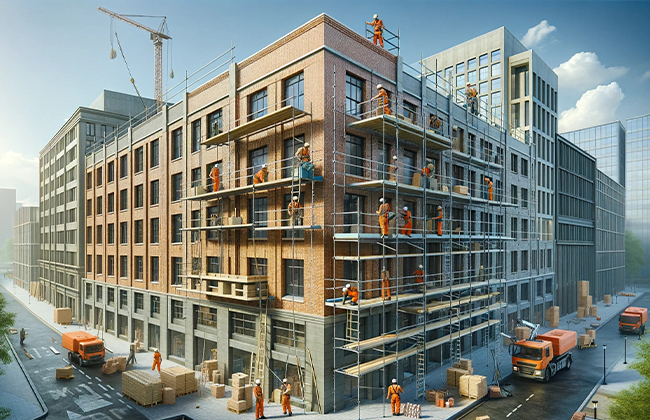
Ensuring that brickwork is installed correctly and maintained regularly is crucial for maximizing its lifespan and effectiveness in commercial structures. Here, we’ll discuss the key considerations for proper installation and offer practical tips for ongoing maintenance.
Proper Installation of Brickwork
1. Choosing the Right Mortar
Selecting the appropriate mortar is vital for the durability and strength of brickwork. Mortar acts as the bonding agent between bricks, and its properties should complement the type of brick used. For example, a stronger mortar is necessary for load-bearing walls, whereas a more flexible mortar may be needed in areas prone to thermal expansion.
2. Skilled Workmanship
The quality of construction significantly affects the integrity of brickwork. It is important to employ skilled bricklayers who understand the nuances of brick bonding techniques and can ensure each brick is laid evenly and securely. This reduces the risk of structural issues and enhances the aesthetic quality of the finished project.
3. Adherence to Building Codes
Following local building codes is not just about compliance but also about ensuring safety and performance. These regulations dictate everything from the types of materials used to the methods of installation, tailored to local environmental conditions and safety standards.
Maintenance Tips for Brickwork
1. Regular Cleaning
Maintaining the appearance and integrity of brickwork involves regular cleaning. This process removes dirt, moss, and other debris that can accumulate on brick surfaces, potentially causing stains or moisture retention. Cleaning can be performed with gentle, non-acidic solutions to avoid damaging the brick.
2. Prompt Repairs
Addressing any damage, such as cracks or chips, as soon as they appear is crucial. Early repairs prevent minor issues from becoming major structural problems. For instance, small cracks can allow moisture to penetrate the brickwork, leading to more significant damage over time.
3. Sealing
To enhance the longevity of brickwork, particularly in harsh weather conditions, applying a sealant can be a wise measure. Sealants provide a protective layer that repels water and reduces the risk of frost damage and efflorescence, which is the formation of salt deposits on brick surfaces.
Common Challenges and Solutions in Commercial Brickwork
Commercial brickwork, while highly durable and aesthetic, can encounter several challenges that can impact its integrity and appearance. Here, we’ll explore some of these common issues and discuss effective solutions to ensure the longevity of brick constructions.
1. Efflorescence
What is Efflorescence?
Efflorescence occurs when water soluble salts come to the surface of the brick and crystallize as the water evaporates. This leaves a white, powdery residue that can mar the appearance of the brickwork.
Solutions:
- Proper Material Selection: Use low-salt content bricks and mortars that are less likely to contribute to efflorescence.
- Waterproofing: Apply waterproofing treatments to the bricks and mortar to prevent water from penetrating and dissolving the salts.
2. Spalling
What Causes Spalling?
Spalling refers to the flaking off of the brick surface, often due to moisture entering the brick and causing internal stress as temperatures change, especially in freezing conditions.
Solutions:
- Quality Bricks: Ensure that bricks are graded for the specific climate, particularly for resistance to freeze-thaw cycles.
- Adequate Sealing: Regularly applying sealant can prevent water from entering the bricks and causing spalling.
3. Structural Failure
What Leads to Structural Failure in Brickwork?
Structural failure can happen when the brickwork is improperly designed or constructed, leading to an inability to support the building’s load or to withstand environmental stresses.
Solutions:
- Accurate Design and Planning: Work closely with structural engineers to ensure that the brickwork design can handle expected loads and environmental pressures.
- Skilled Installation: Use experienced bricklayers who understand the intricacies of building to professional standards and who can ensure that every aspect of the construction is executed correctly.
- Regular Inspections: Schedule routine inspections to identify and rectify any potential weaknesses or damages before they escalate into serious structural problems.
Conclusion:
Commercial brickwork is a versatile and reliable choice for any commercial construction project, providing a perfect blend of functionality and aesthetic appeal. Regular maintenance and proper installation are key to maximizing the benefits of commercial brickwork. If you’re looking for professional contractors to handle your commercial brickwork needs, feel free to contact us at (+1) 917-355-8556 for expert assistance and services.
FAQs
Q: What are the main benefits of using commercial brickwork?
A: Commercial brickwork offers exceptional durability and low maintenance, making it an ideal choice for commercial buildings. Its robust nature ensures that structures can withstand harsh environmental conditions while maintaining their aesthetic appeal.
Q: How often should commercial brickwork be inspected?
A: It is recommended to inspect commercial brickwork at least once every two years to ensure it remains in good condition. Regular inspections help identify potential issues early, allowing for timely interventions that prolong the life of the brickwork.
Q: What are the best practices for maintaining commercial brickwork?
A: Maintaining commercial brickwork involves regular cleaning, prompt repairs of any damage, and applying a sealant to protect against moisture and weather conditions. These practices help preserve the brickwork’s structural integrity and appearance.
Q: Can commercial brickwork be customized for any design?
A: Yes, commercial brickwork can be customized to fit various architectural styles. With a range of colors, textures, and bonding patterns, bricks can be tailored to enhance the design and functionality of any commercial building.
Q: What should I consider when choosing bricks for commercial brickwork?
A: When selecting bricks for commercial brickwork, consider factors like durability, fire resistance, and thermal properties. Choosing the right type of brick depending on the climate and building use is crucial for the long-term performance of the structure.


